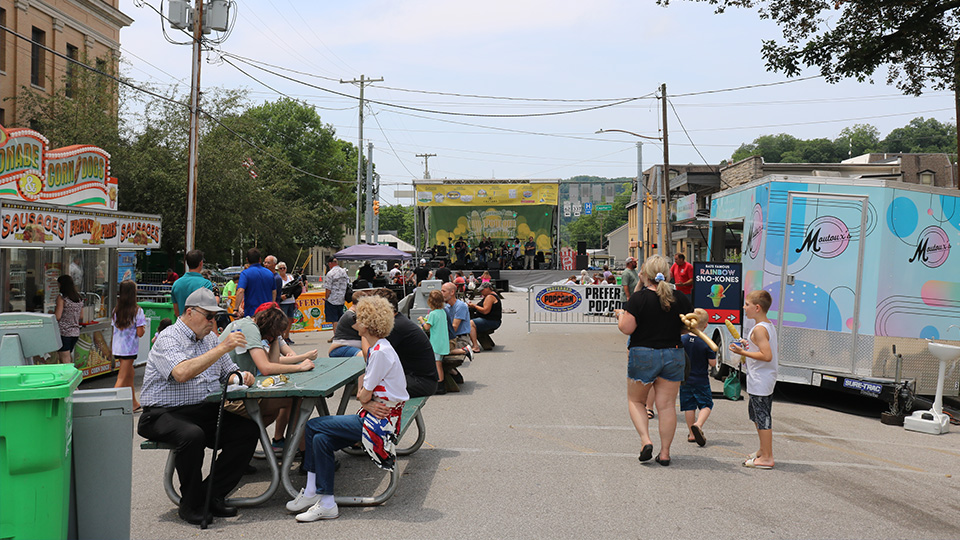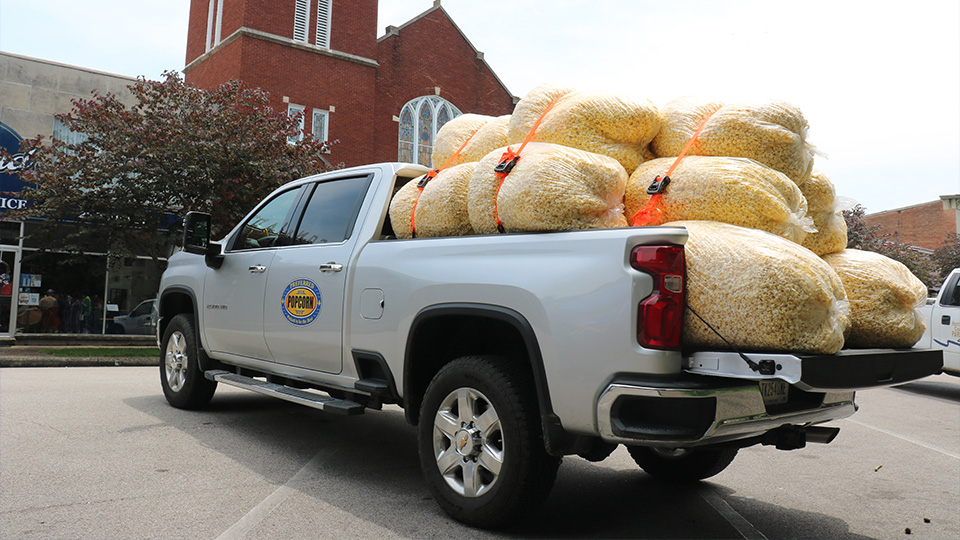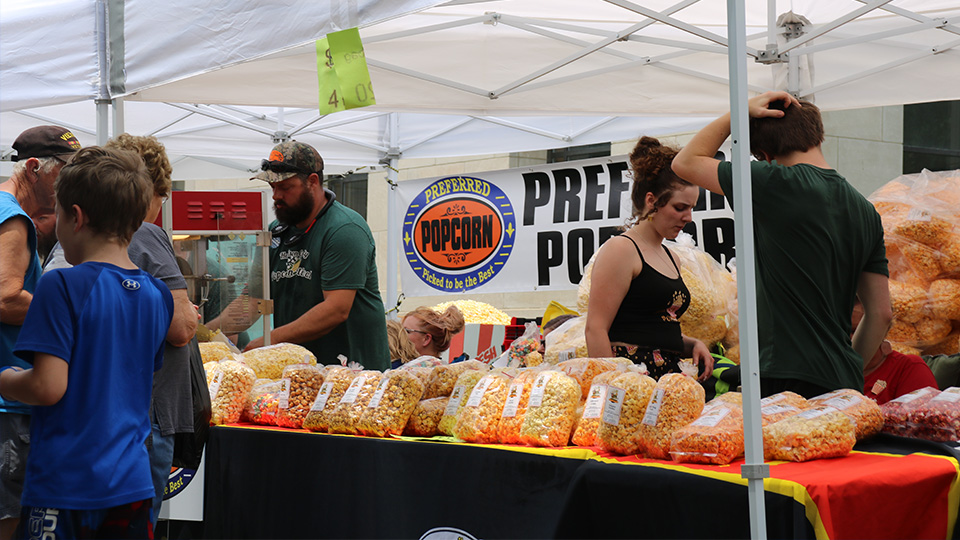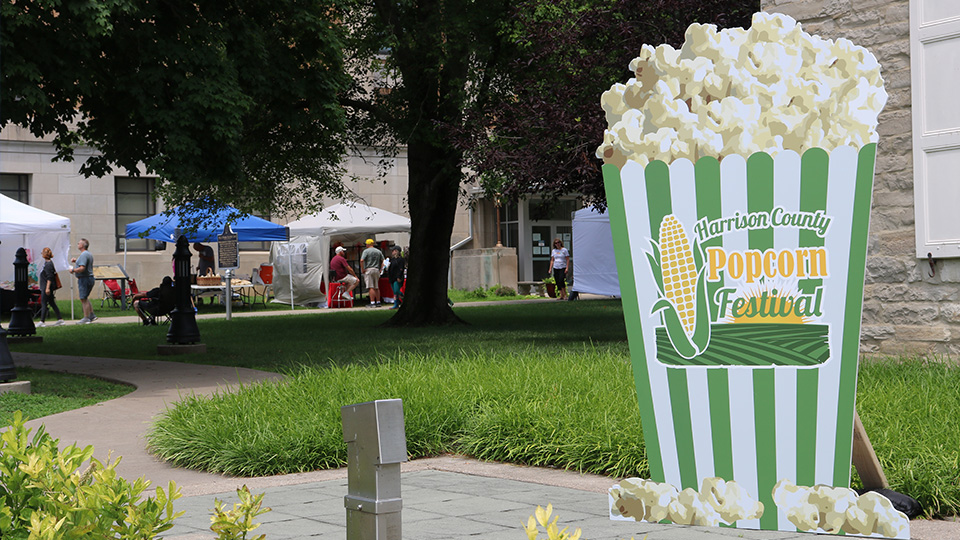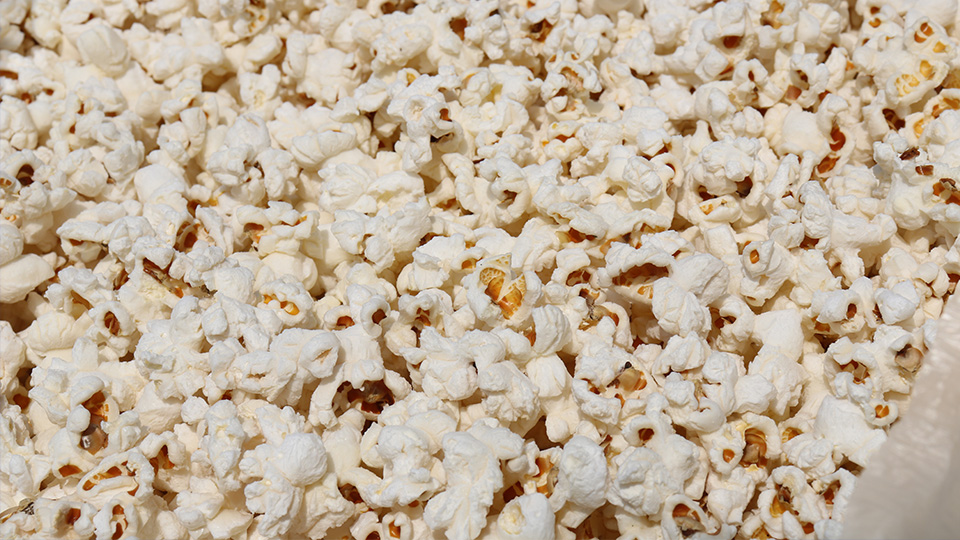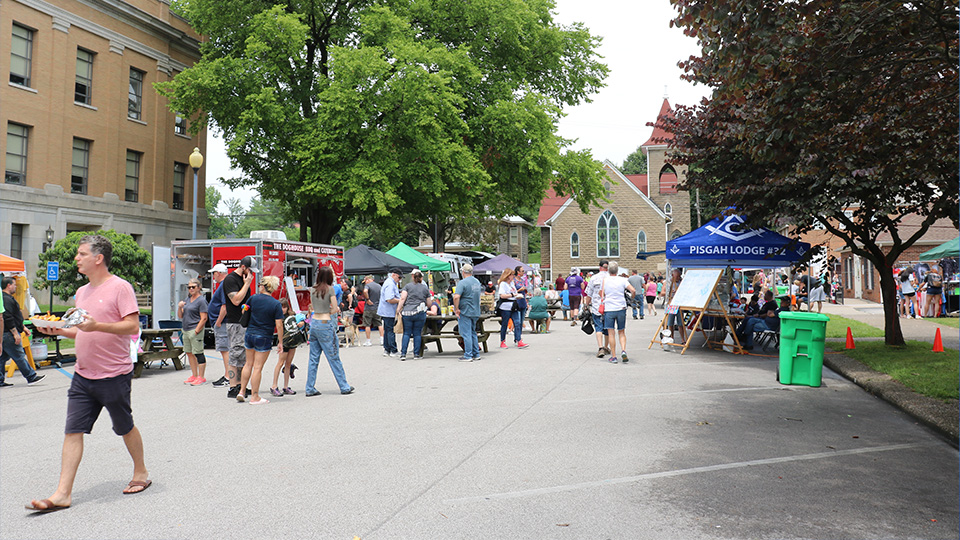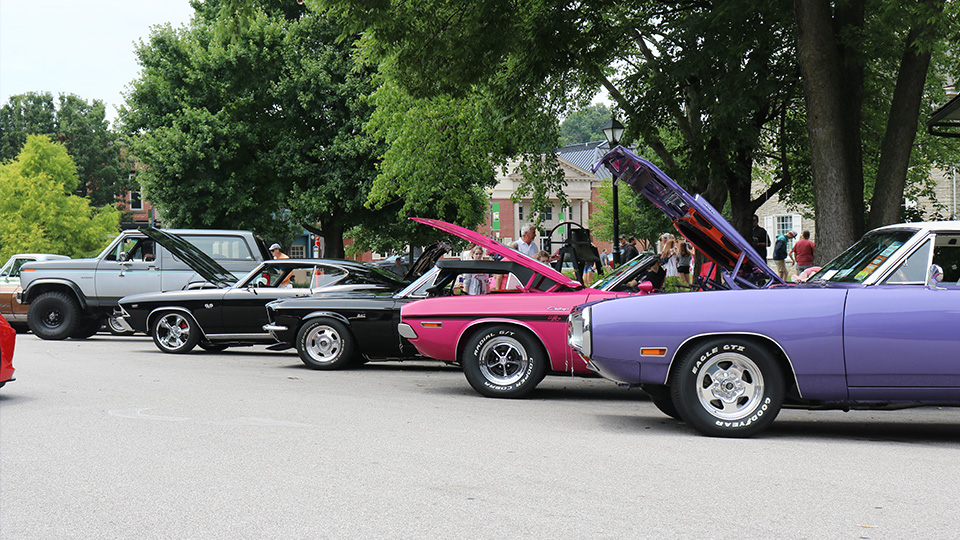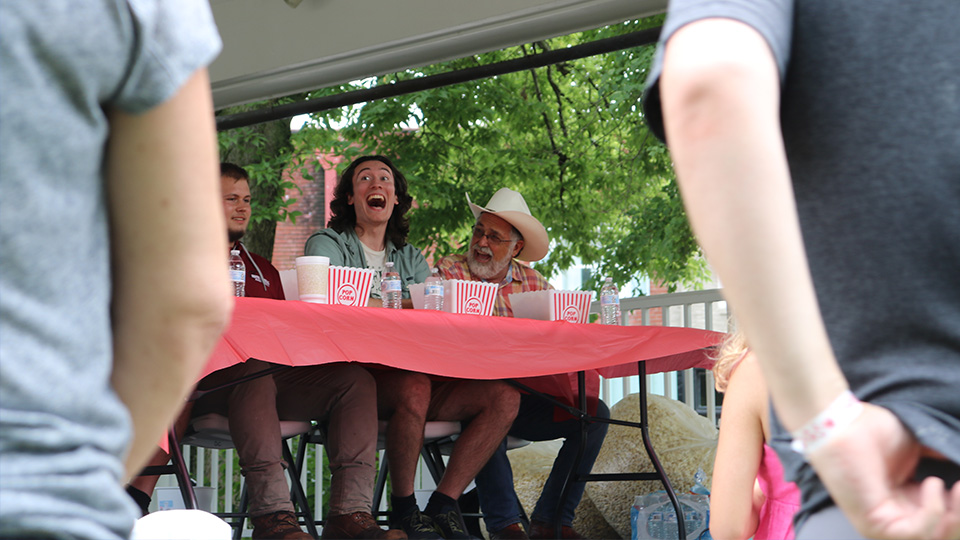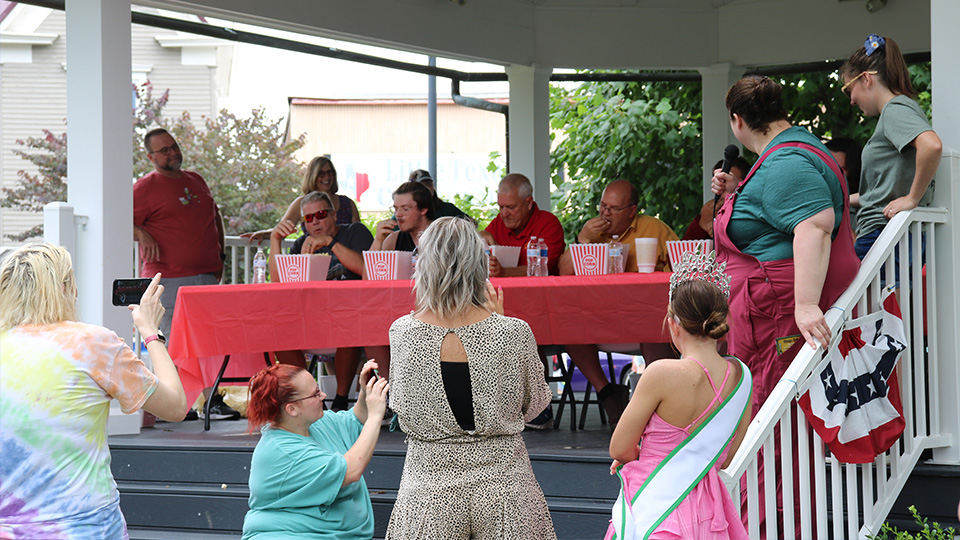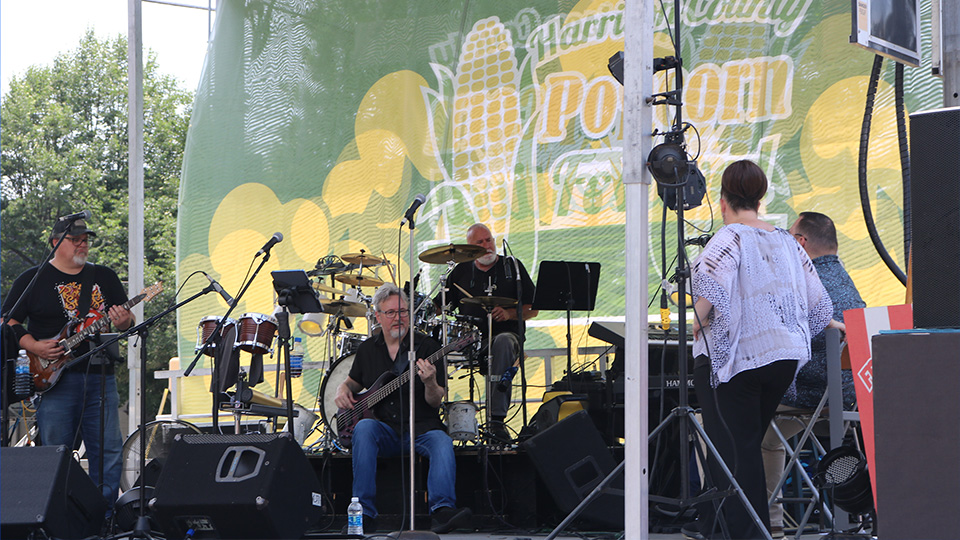Local festivals celebrating tradition, local business create gateway to future development
Subscriber Benefit
As a subscriber you can listen to articles at work, in the car, or while you work out. Subscribe NowSummer after summer, dozens of small towns and counties throughout Indiana intrigue thousands of visitors to indulge in communal festivals, buy local and check out a new area.
These festivals can be reflective of a local economy, like Harrison County’s Popcorn Festival, celebrating a product the county exports 20 million pounds of each year and Mitchell’s Persimmon Festival, falling during harvest season for the prolific Hoosier native fruit.
Others use a food product as just an orchestrator of a county event that is not necessarily tied to its business makeup. Though none of its beholden fruits are native to the state, Crawfordsville’s Strawberry Festival, Marshall County’s Blueberry Festival and Jackson County’s Watermelon Festival are each economic drivers for local vendors and the county to see more visitors and treat their residents.
*****
A symphony of generators and classic rock covers fill the soundscape of downtown Corydon. Closed road signs and orange barriers lead to street vendors, crafty folks and packed picnic tables. Crowds are clad with strollers, sun-burnt buddies and a bling-adorned queen.
It’s a pretty good turnout for a young festival laden with looming dark clouds and potential tornado warnings, thought Jeremy Yackle, the county convention and visitors bureau executive director and festival board member.
Harrison County held the second year of its reborn popcorn festival the weekend of June 30. The festival was something of a faded memory for many residents, having dissolved a few decades prior. County officials like Yackle wanted to revamp it because popcorn is such a significant part of its farming base.
Yackle talks about the impact this festival could have on the Corydon community of 3,000.
One of the festival’s goals was to combine the county’s business sector and a family-friendly event to create a new local tradition, said Larry Shickles, county Parks & Recreation director.
“Bringing back the popcorn festival because of the local economy and the businesses seems to make the most sense,” Shickles said.
Further north, one of the biggest events in Montgomery County is Crawfordsville’s Strawberry Festival, which just celebrated its running this year June 9-11. It was a breakthrough year after the pandemic where organizers finally felt like crowds and vendors were back, especially after expanding its offering for the jubilee celebration.
It started as an ice cream social community gathering type of event stretching back to the late 1800s, said festival chairman Dave Long, who has worked on the event since 1996. Since its organization half a century ago, the festival has progressed into a significant communal event, building upon itself each year.
“It’s just a way for a lot of folks to kind of go back to what they remember in the rural areas as a small-town event,” Long said.
*****
Festivals funnel people into shrinking downtowns and put extra eyes onto the product that is the local county, especially after the economic shock of the pandemic.
A few blocks of downtown Corydon were closed off for the celebration’s stage, kid zone, car show and about 45 vendors. The popcorn festival wants to continue growing to be more sustainable long-term and expand the festival’s presence in what they established — booths and entertainment.
Brian Churchill, Preferred Popcorn Indiana operations manager and festival committee member, said the interest in rebooting the festival was a fantastic way to celebrate the industry and get the greater community involved. With over 100 employees and farm operations, he said the event gives back and shows appreciation for the people in the industry.
Preferred Popcorn works with 19 family farms in the county, amounting to 4,400 acres of popcorn crop and over 10% of the country’s popcorn production. The company is expansive, with contracts in every state and worldwide, servicing movie theaters and amusement parks as well as landing on grocery store shelves.
Churchill estimated a $15-20 million dollar direct impact from the popcorn industry on the county.
“It starts with the farmers that plant the seeds in the ground,” he said. “Indiana has always been the home to big popcorn.”
Brian Churchill, Preferred Popcorn Indiana operations manager, talks about celebrating the county’s big export and local farmers.
The amount of popcorn is demonstrated just by the amount they planned to put in a popcorn blower to rain down in the street for the parade. A pickup truck was stacked high with large clear bags of popcorn, which Churchill said is only a fourth of what they will use in the parade. Compared to the thousands of acres they grow, he said this is a small fraction.
It’s going to take a few years before festival organizers have hard numbers to show economic impact and gain self-sufficiency, but Yackle said they are staying the course. The number of people on the streets, the uptick in vendor numbers and local business feedback make officials optimistic.
Yackle said there have been multiple entrepreneurs who have seen great profit so far. He mentioned one Mexican street corn vendor who sold out 500 ears of corn last year and remarked he didn’t realize he’d need to double his supply for the event.
The strawberry festival never had a solid way of counting guest numbers but has recently contracted with a company to calculate that data. While this year’s numbers are not available yet, Long said the 2022 festival saw 13,000 people, which was nearly double what organizers had guessed.
“We might be entering into, I guess, sort of new era for us next year,” he said. “We can do a lot more outreach to areas to get people in.”
In two days and a Sunday rainout, the strawberry festival’s children’s area sold 92,000 tickets at 50 cents a piece, bringing in around $46,000. Long said the festival’s income is expected to be about $116,000 with expenses accounting for $95,000. What’s left over is reinvested in the festival for next year.
Many strawberry festival booths are operated by local not-for-profits, teams and groups trying to raise money. The festival created a new commercial section, which was full, in addition to the kids, crafts and food areas. After COVID, the crafty folks dwindled as many stayed home or retired from the business, Long said, but younger people and the mainstays are coming back to the point they filled up craft booths a month out.
When talking to the food and artsy vendors, Long said many of the covered their expenses before the end of the first of three days.
*****
Festivals bring opportunity for regional revitalization. Just two or three families moving could result in a significant economic bump for towns and counties as well as building both a town culture and momentum others want to take part in.
The state has used legislation and state dollars, such as the Regional Economic Acceleration and Development Initiative, or READI, to reignite rural Indiana and smaller metropolitan areas to build its infrastructure and quality of life. Local officials want their “product” to entice visitors to stick around, book a room in the future and maybe plan to move.
Festivals fall in line with what state officials hit on as “quality of place,” meaning attractions, amenities and attributes specific to an area that locals enjoy.
Strawberry Festival chairperson Dave Long speaks on the economic impact he seen the festival have and how it benefits the area to urge people to visit again or move there.
Festivals have an economic impact people may not realize is generated, Long said. Hotels and campgrounds receive extra bookings, not-for-profits make some extra cash and small businesses see new faces.
Recently, he said they expanded the strawberry festival’s advertising and footprint to draw in a larger audience to the town of 16,000. They place ads all over the state in Terre Haute, Indianapolis and Lafayette and in Illinois.
Long said they want people to think, “Hey, this is not a bad little town, and maybe we’ll consider moving here someday.”
Businesses are also investing and building in their area, so they are providing and bolstering their attractions for those new workers to enjoy. They want to make people feel part of the community they live in and build a culture, Long said. Newbies may find they really like what they see and want to stay, he said.
“Anytime you can introduce people to what you have, it’s a win-win situation.” Long said. “Festivals are just part of that puzzle.”
Long also noticed other smaller towns around them have started their own festivals. The whole idea, he said, is to get people in the county limits to showcase what the area has to offer.
He noted the area has five museums, an old rotary jail, antique stores and Wabash College. Maybe visitors won’t have time to explore everything with the festival going on, he said, so they come back to explore. They want to capitalize on the trend of one-day trips where people drive two, three hours away and discover someplace new.
“A lot of it is getting people back downtown,” Yackle said. “That’s a struggle in any community right now, especially a community our size.”
Though still young, the popcorn festival is a blooming highlight of the town of 3,000.
It can serve as an invitation to the town, bringing people in off the interstate to check out the festival and stay for the caves, trails, nightlife and arts. The goal of the festival is primarily for people to have fun, Yackle said, but it shows how such events can be so important economically as well.
“We want to create a product that not only brings our local residents in and our neighbors from the surrounding counties,” Yackle said. “But we want folks to travel, come spend the night with us and enjoy this event as well and visit what all we have to do.”

